Author: rafaelfreyre
The unexpected of the outdoor spaces
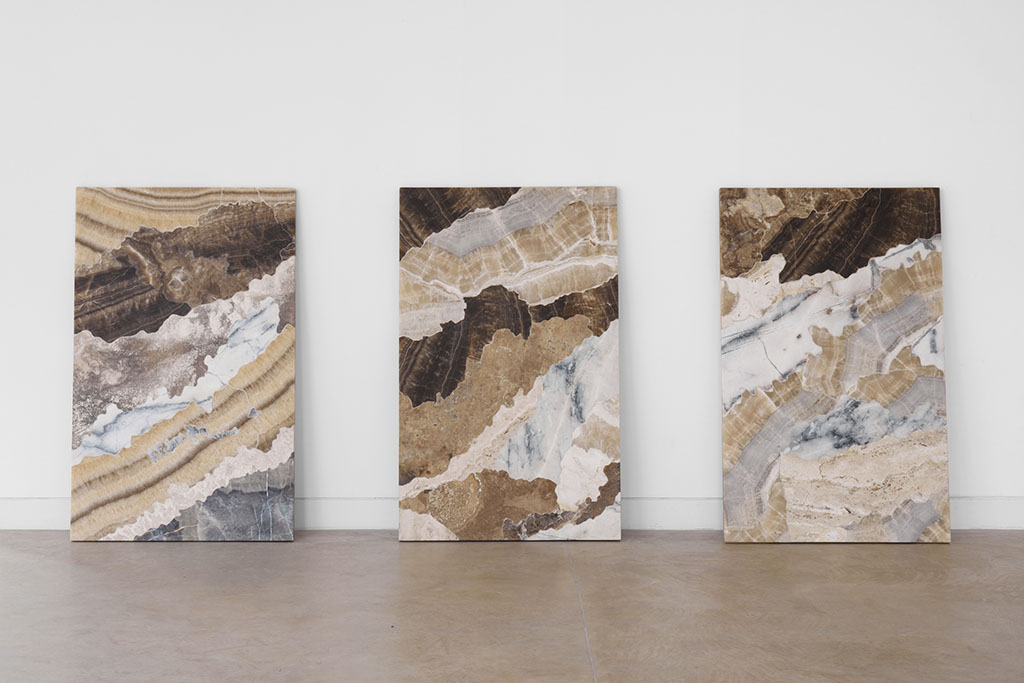
"Tres vistas aéreas de los Andes y Amazonía" es una pieza trabajada a mano por los artesanos del taller de Roberto Román en el distrito de Huaycán, al este de Lima. "Three aerial views of the Andes and Amazon" was handcrafted by artisans from Roberto Román's workshop located in Huaycán district, at the east of Lima.
The Material of the Landscape
The stones allude directly to our nearest landscape: the mountains that border the coast of Lima. They are witness of flowing water and the passage of time. They come down from the highlands through the river creaks until they reach the sea and become sand. It is in the water where the Andes, the Amazonia and the desert converge.
We dig up land and find the imprints of every time, like rings of trees. We find a geographic and geologic space formed by overlapping layers and skins, fossils and time sediments that recreate the diverse and fragmented, past and present, solid and liquid at the same time. It is space in continuous discontinuity.
The Material of the Landscape aims to reconstruct the continuity of our time and space, reconnecting identity and body, and the relation with our inner and outer self, finding again the origins of the wild materials and their continuous transformation.
CONCEPT AND DESIGN
RAFAEL FREYRE
CRAFT WORK AND PRODUCTION OF PIECES
ROBERTO ROMÁN MUNAILLA
PRODUCTION
SOL JACOBS
MARÍ RETAMOZO
YULIANA SANTA MARÍA
PHOTOGRAPHY
JUAN PABLO MURRUGARA
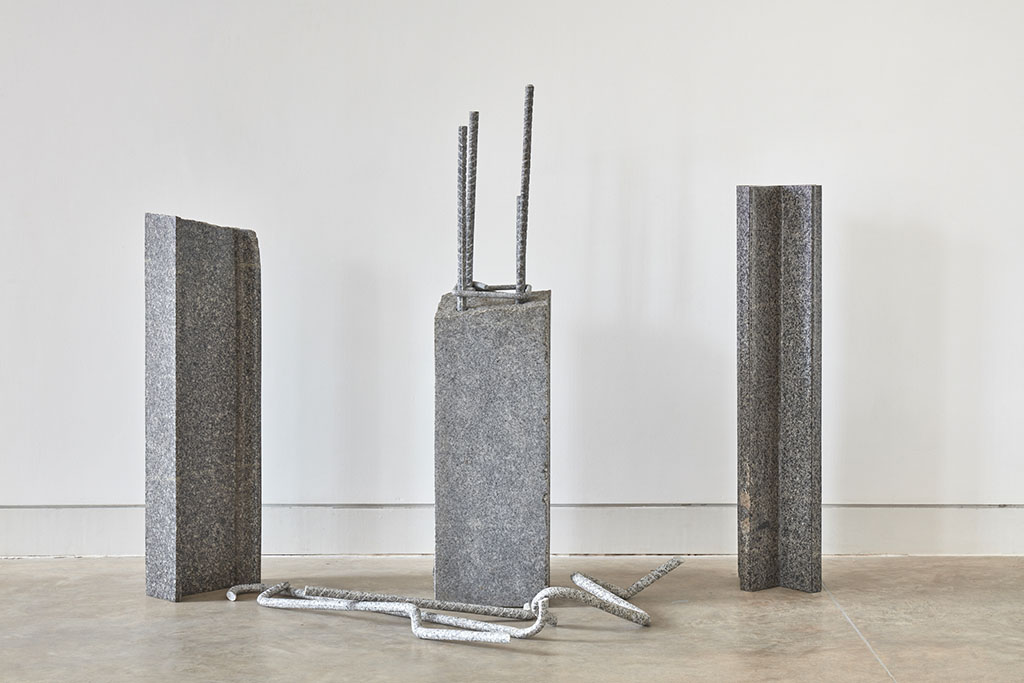
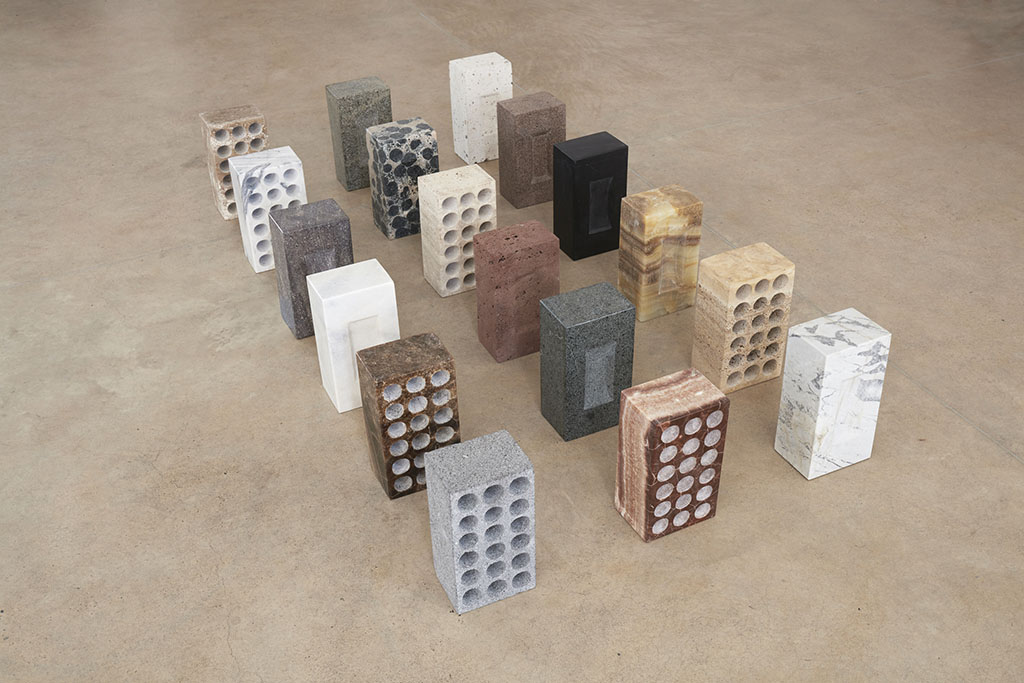
Ladrillos fabricados artesanalmente con distintas piedras del ande peruano. Bricks handcrafted with different stones from Peruvian Andes.
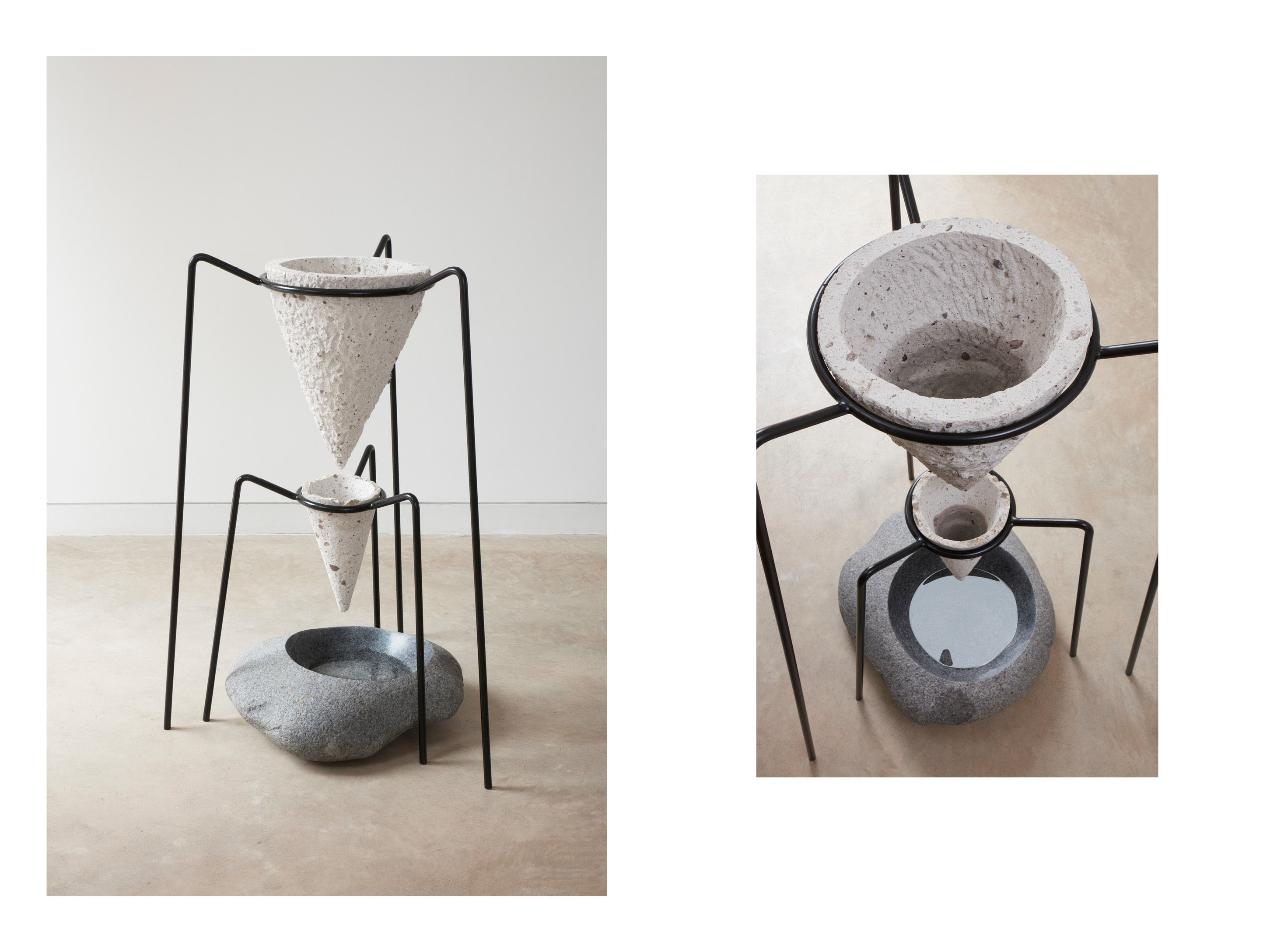
Filtro de agua fabricado artesanalmente con piedra volcánica. Handcrafted water filter with volcanic stone.
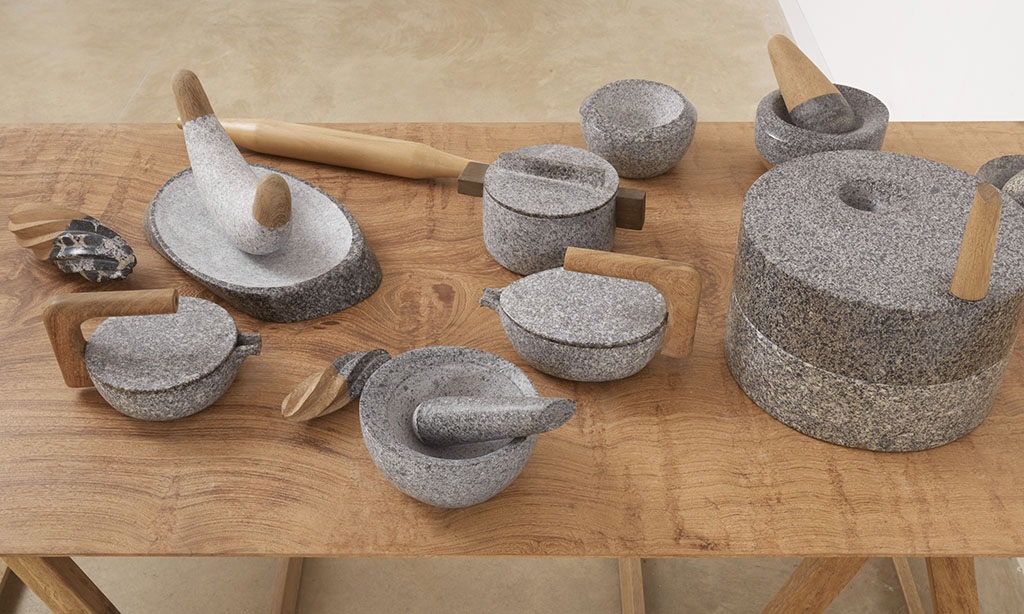
Utensilios para rituales diarios de granito y madera amazónica. Utensils for daily rituals handcrafted with granite and Amazonian wood.
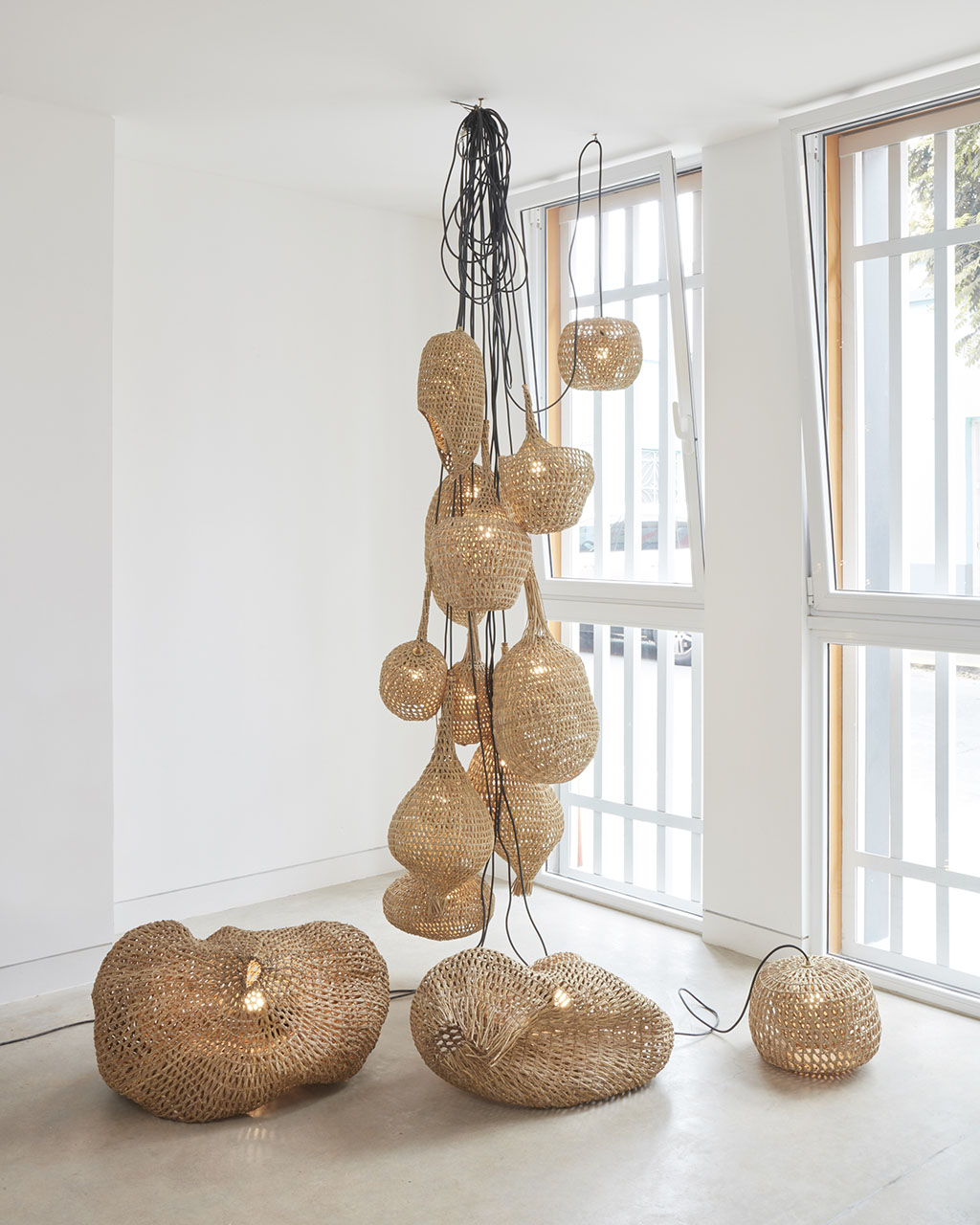
Humedales de la costa. Lámparas tejidas con junco. Coastal wetlands. Woven lamps with reed.
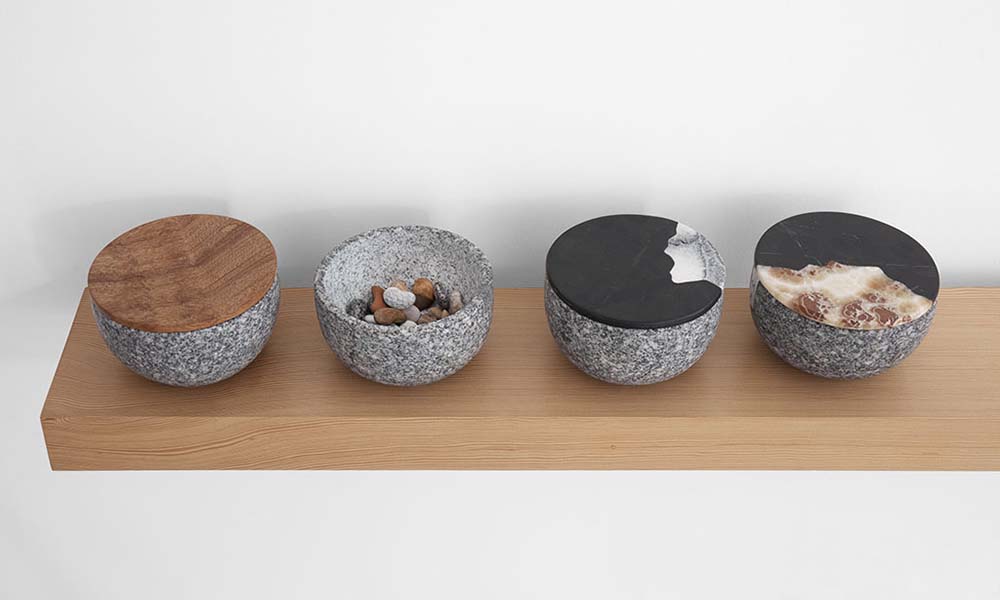
Germinadores. Utensilios de diversas piedras del Ande peruano. Germinators. Utensils made with different stones of peruvian Andes.
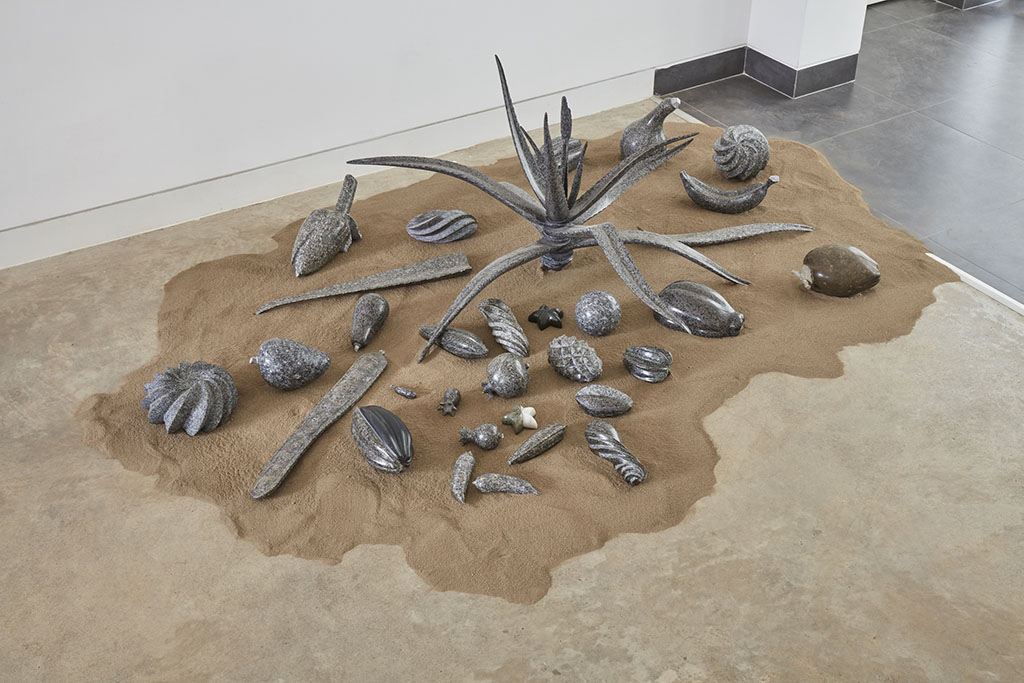
Plantas medicinales. Esculturas fabricadas artesanalmente con granito de Huaycán. Medicinal plants. Handmade sculptures made with granite from Huaycán.
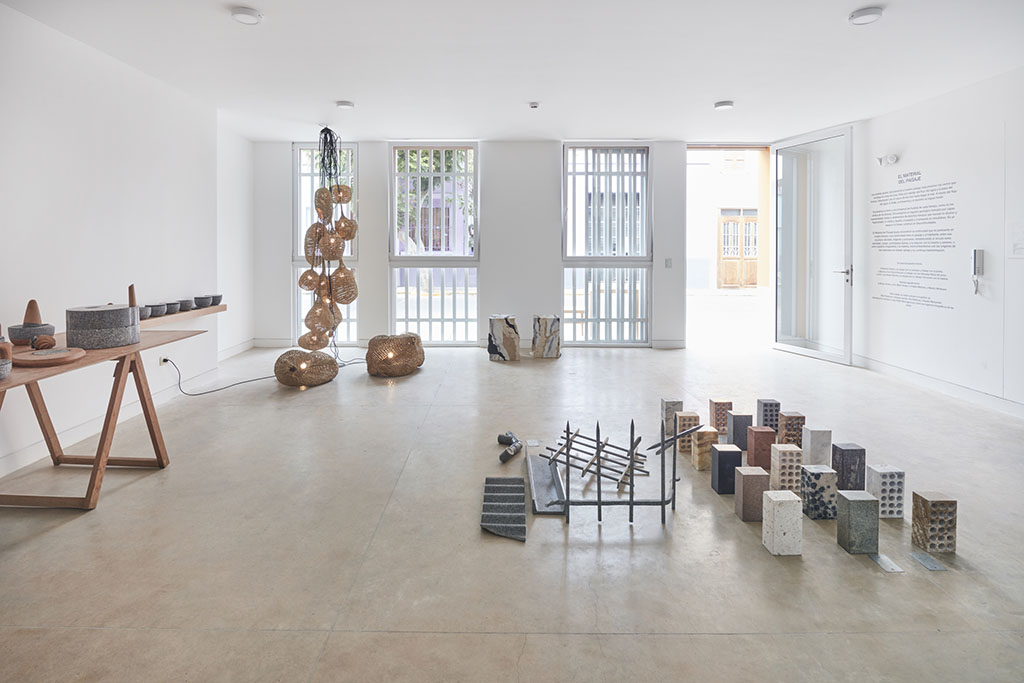
Muestra El Material del Paisaje
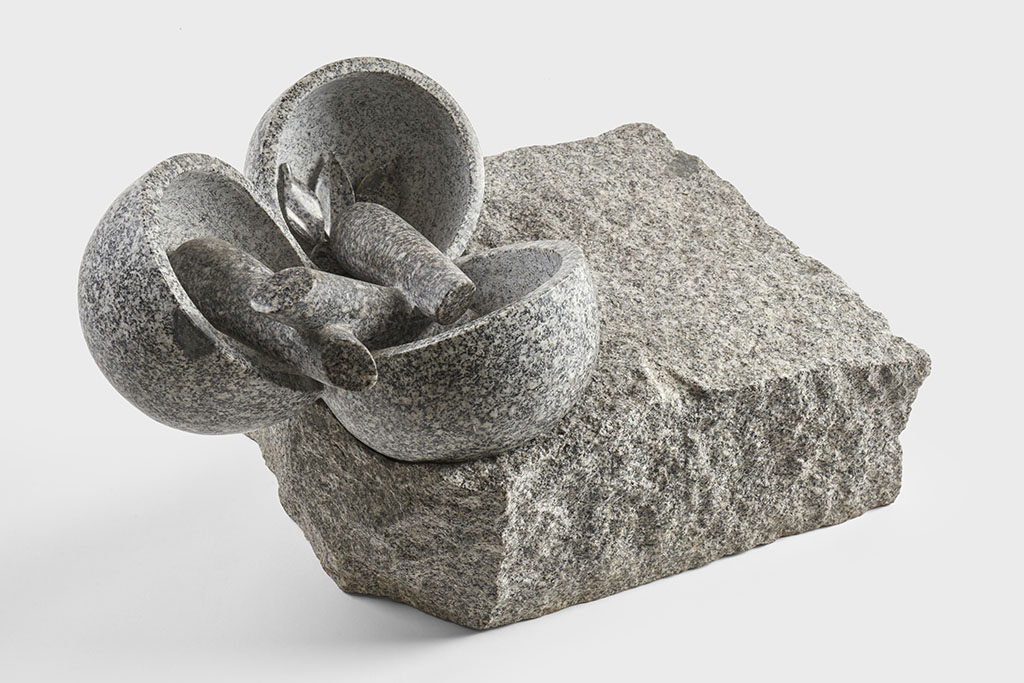
Escultura de piedra Tres Morteros Unidos
Three mortars united
Mortars are manual tools employed in various collective rituals of pre-Columbian societies. Their use varies from religious ceremonies to food and medicine preparation. Through them, we extract the essences that plants and minerals have created from their interaction with the sun, water and soil.
Nourishment, healing, and ritual are all contained within a single, three-concavity object. It is through the extraction of living substances, colored dyes, flavors, scents and remedies that our body – with a repetitive and rhythmic movement – relates to an ancient ritual.
“Tres morteros unidos” participó en la 19º edición del Concurso Anual de Esculturas IPAE donde recibió el premio ganador junto a la obra “Caracol Puercospín” de Eduardo Llanos Bustamante.
CONCEPT AND DESIGN
RAFAEL FREYRE
STONE WORK
ROBERTO ROMÁN
MATERIAL
GRANITE FROM HUAYCAN
PHOTOGRAPHY
JUAN PABLO MURRUGARA
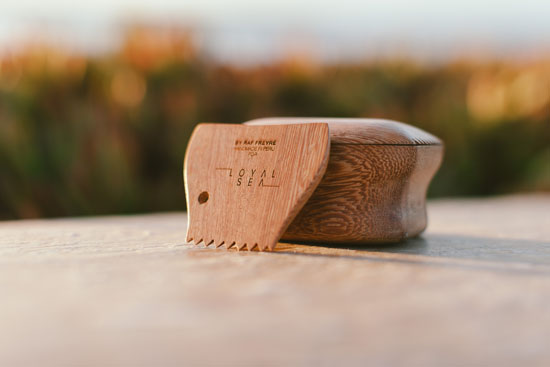
Kit de cera
We met Loyalsea in 2017. The project celebrates the diversity in surf through empowering stories and imagery for media and brand partners. The team works with an engaged community of creators and individuals such as surfers, photographers and nature lovers. For those creators, Loyalsea wanted a special gift that connects them with their favourite pastime – surf – and nature.
Surf has a particular tool for an almost ritualistic moment: the waxkit. This small gadjet must appear right at the transition from land to water. Putting on wax and preparing the board is an action that, for Loyalsea, deserves special treatment. We believe that design can give a new sense to moments like this, it can reestablish the connection between self and nature, and enrich our experience of time. It was an interesting challenge to design a waxkit for their community.
We share with Loyalsea founder, Katharina Kieck, our love of the sea and the knowledge that through design we can have a positive relation with nature, avoiding the use of plastic. This is why the waxkit is made from hand-carved huayruro wood, a tree native to peruvian Amazon, and the accompanying comb has a braided hemp cord. The wax-box closing system has two small embedded magnets that can keep the lid tight when on the go, and can open easily by sliding sideways.
For the studio, this collaboration with Loyalsea was especially rewarding, and it is part of our ongoing exploration on our relation with water sources. Water is a fundamental element in our life.
CLIENT
Loyalsea
DESIGN
Rafael Freyre
PRODUCTION
Mari Retamozo
WOODMASTER
Luis Mucha
PHOTOGRAPHY
Daniel Espirito Santo
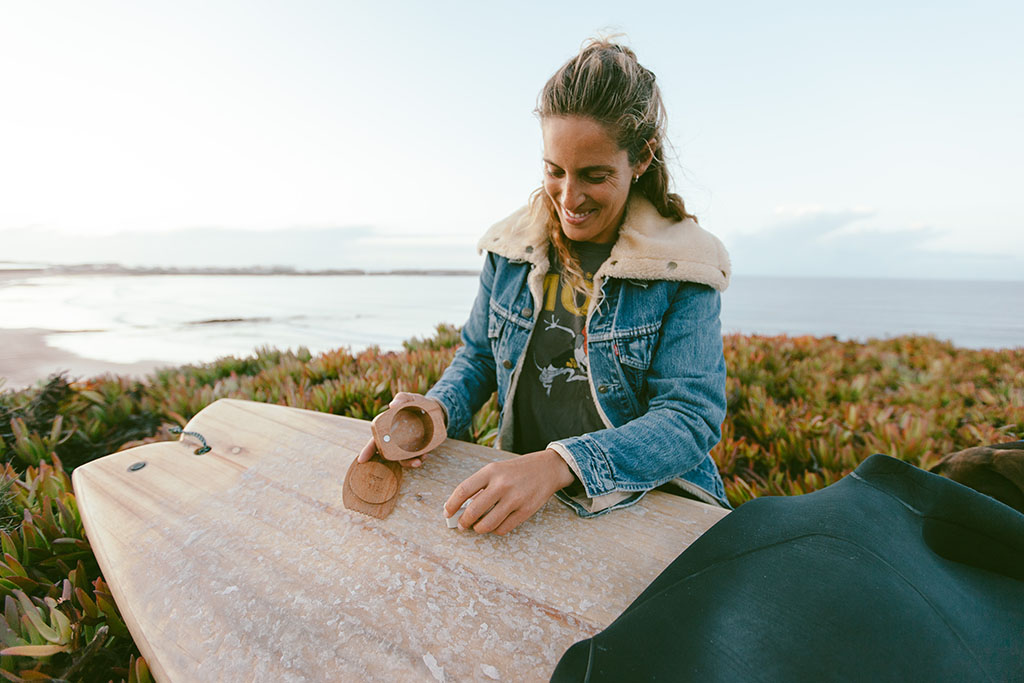
Fusionarse con la naturaleza. A través del surf, el wax kit diseñado en colaboración con Loyal Sea nos reconecta con el mar. Merge into nature. Through surf, this wax kit made in collaboration with Loyal Sea reconect us with the ocean.
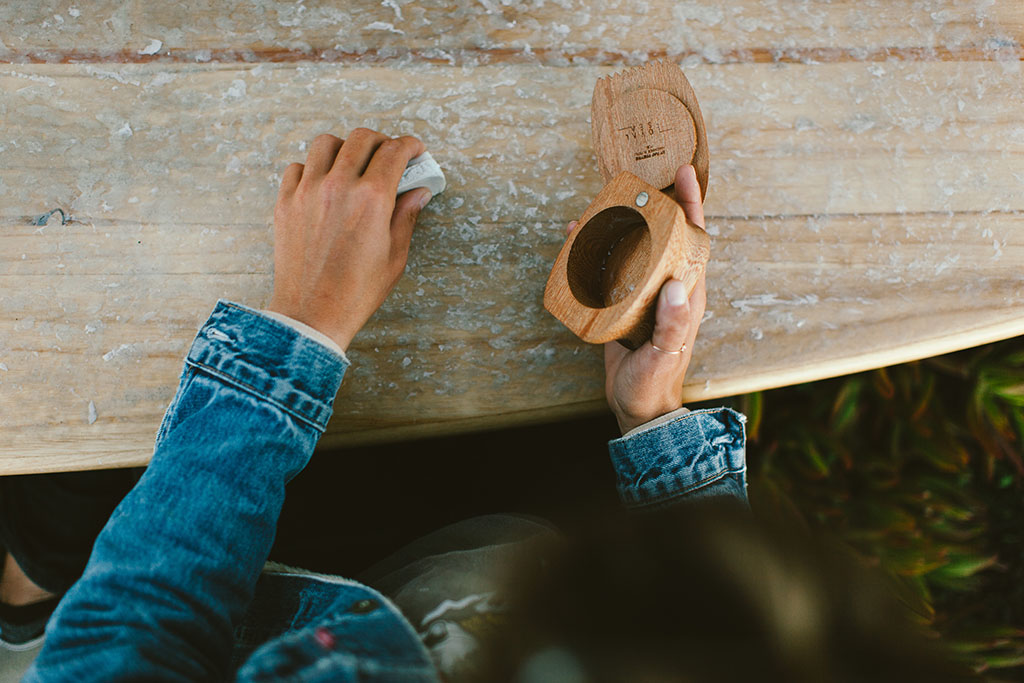
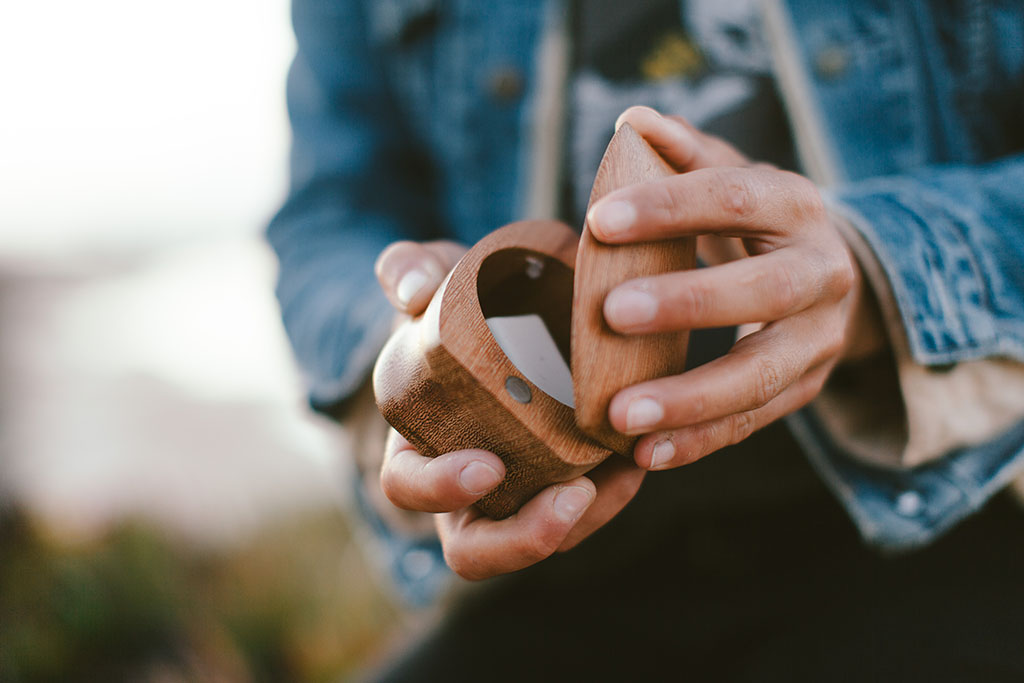
Diseño Sostenible. Wax kit de madera amazónica. Sustainable design. Amazon wood wax kit.
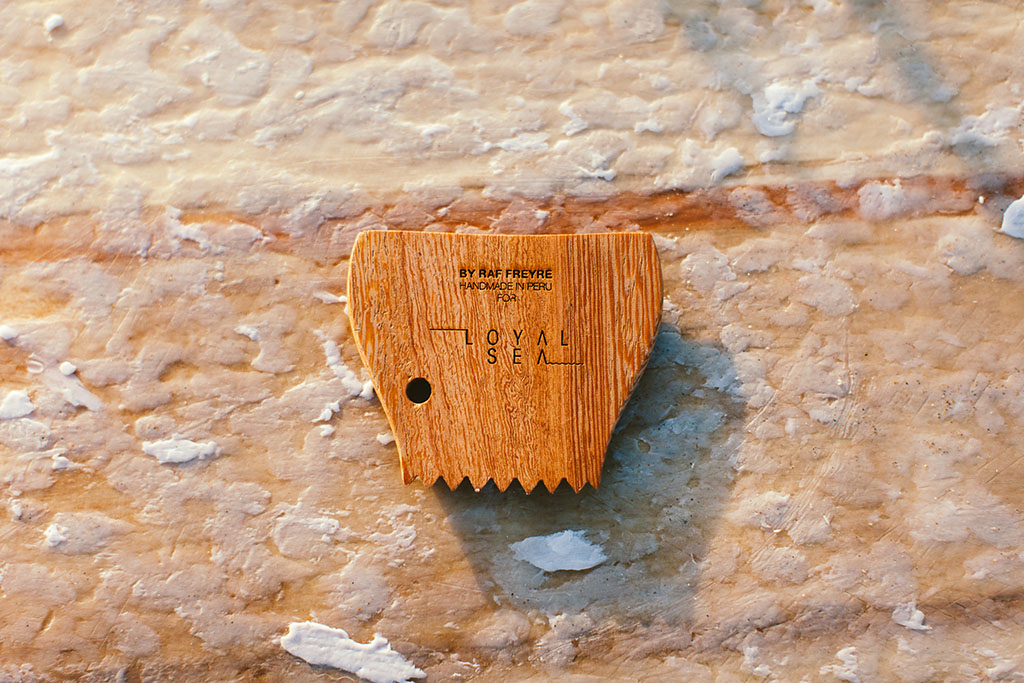

Boceto de telar inspirado en biodiversidad del Perú.
UNWEAVE THE IMAGES
We excavate the earth crust to find sediments and decipher the discontinuous process of stratigraphy. Each strata is like the fiber of a mineral tissue. The vegetables fossilize and settle in the form of mineral remains; the mineral is absorbed by plants and becomes nourishment for animals. One becomes the footprint of the other in a continuous tissue.
Knitting relates us to our surroundings.
Everywhere there exist different fibers, and particular techniques and uses have developed for each one of them. Natives have developed varied skills to work animal furs and plant-based fibers. Some know how to embroider, others weave on looms and create other basketry products. Fibers can grow in different places, but with changes to their toughness, density and color. Where junco grows, baskets are woven; tapestries are made where there is totora and hats were there is toquilla. Different fibers and techniques in each place.
Fibers follow organic shapes and take on the shape of the body they cover when knit. A basket is woven around a mold, just like the tree bark folds around the trunk, or geological layers surround and cover the earth. The tissue folds; it covers us and protects us. It is the surface that surrounds us.
In a loom, animal fibers, plant dyes and mineral pigments become a single tissue. The fibers and threads bend, dye and intertwine one over the other in a discontinuous or interlayered fashion, forming different patterns. Each pattern creates a unique texture in the surface. The artisans understand this process and mold the place’s memory with their hands. As makers, they are able to understand the transformation of the material they employ, which begins in the place where the fibers grow, all the way to the moment in which their hands compose them and give them the finishing touch.
To look into the place is to unravel its image. To peel its layers and the footprints of time to find the fibers and patterns that have formed. To unravel the image is to dismember it in touch-sensitive fibers. It is to penetrate into the skin of the visible surface and understand the manual and bodily processes through which it was formed. To relearn the artisans’ labor means reestablishing contact with these processes. It means understanding there is a footprint left by the body and nature behind that image.
CONCEPT AND DESIGN
RAFAEL FREYRE Y ANA BARBOZA
REED WEAVE
SAMUEL Y EBER GOICOCHEA
FABRIC WEAVE
ELVIA PAUCAR
STONE WORK
ROBERTO ROMÁN

Ilustración en blanco y negro de canastas de junco. Black and white illustration of reed baskets.

Pieza tejida con junco de los humedales de Huacho (Lima). Woven piece with reed from the wetlands of Huacho (Lima).


Pieza tejida con telar y teñida con tintes vegetales y animales. Piece woven with loom and dyed with vegetable and animal dyes.
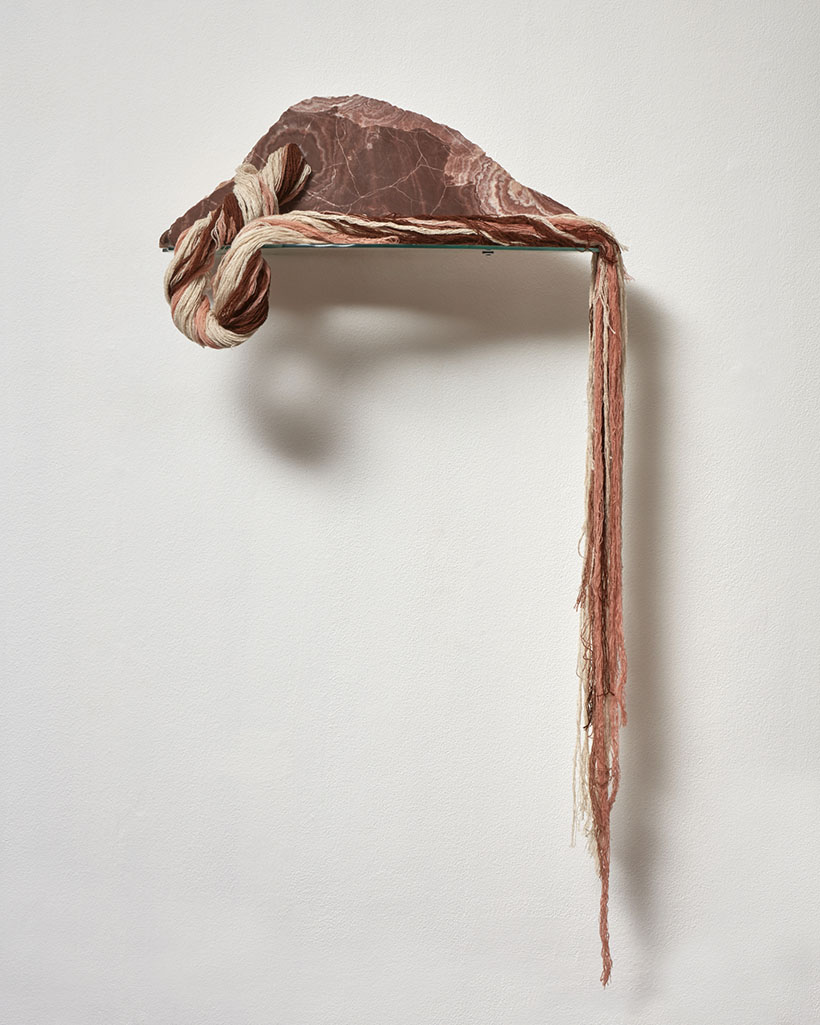
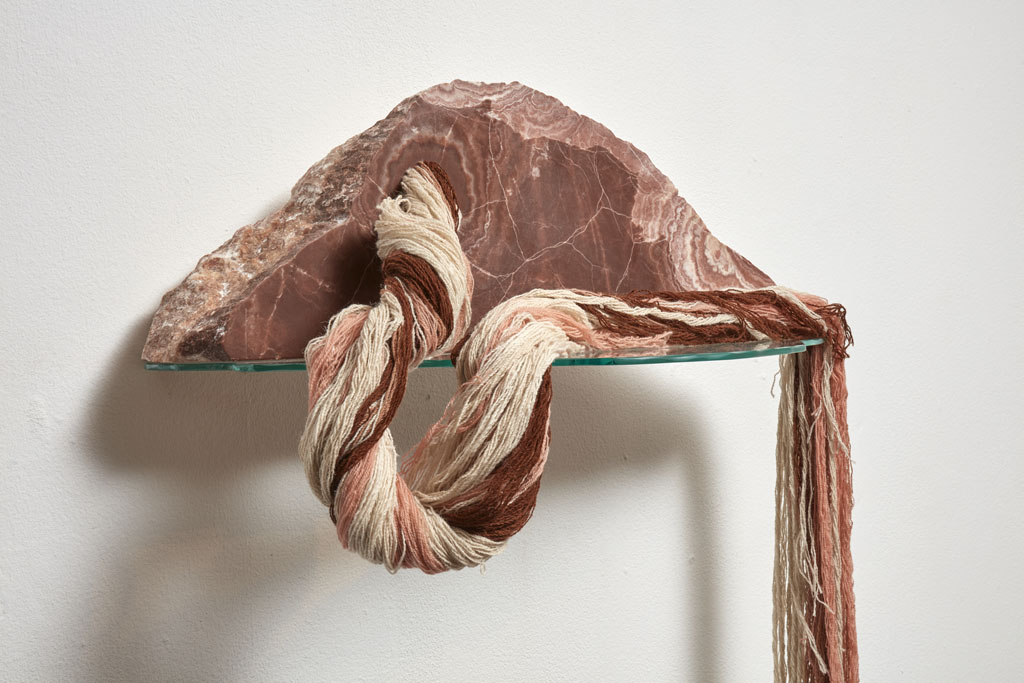
Escultura de Ónix de Huancayo, lana de oveja y alpaca teñida con tinte natural, y vidrio. Onyx from Huancayo, sheep wool and alpaca dyed with natural dye, and glass.
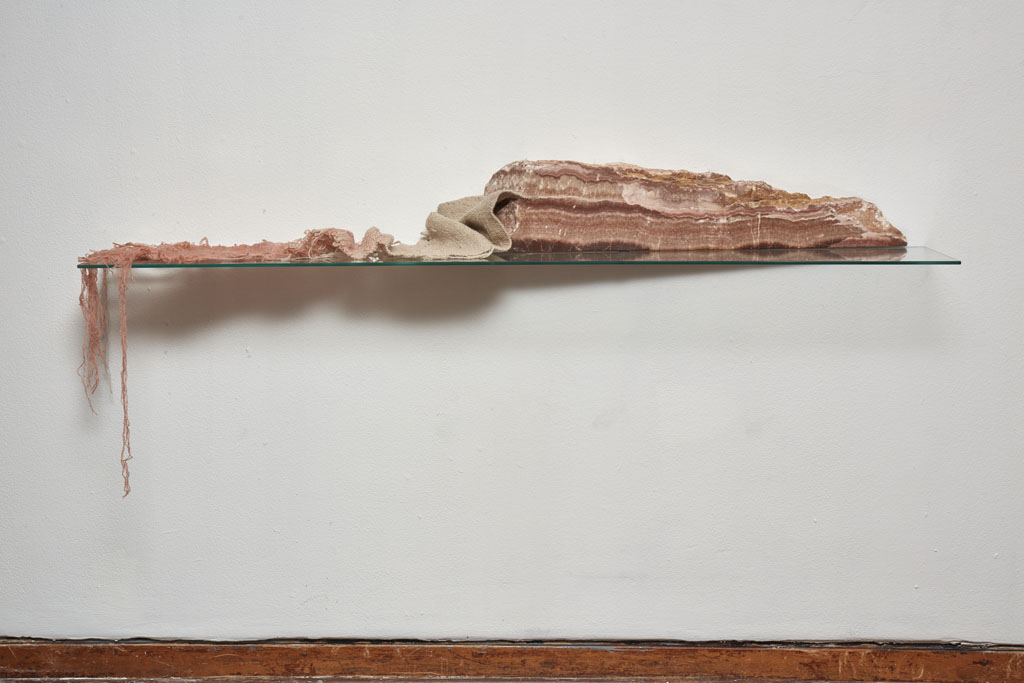
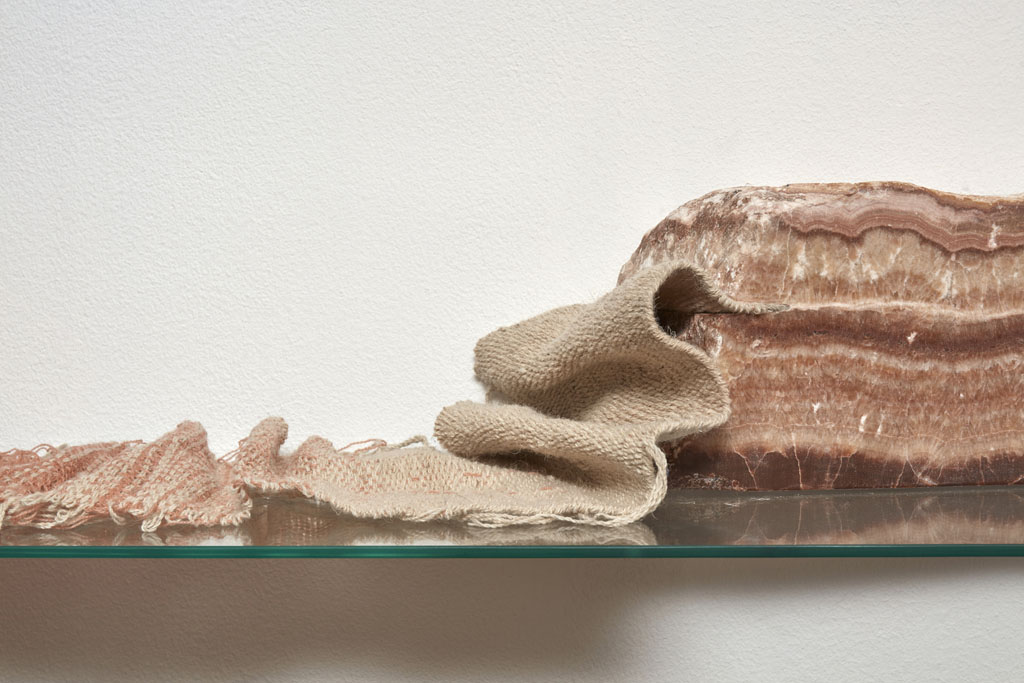

Ovillos de piedra. Stone clews.
